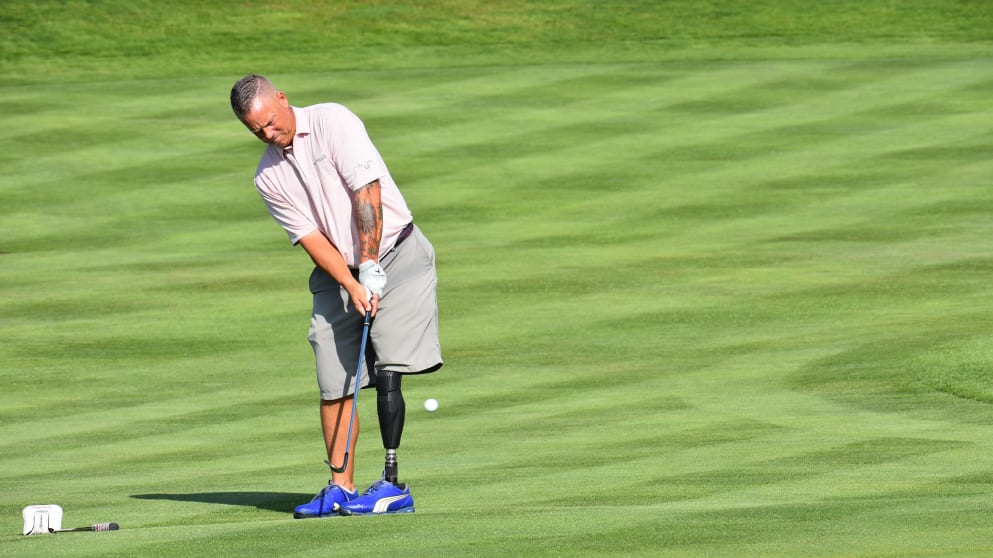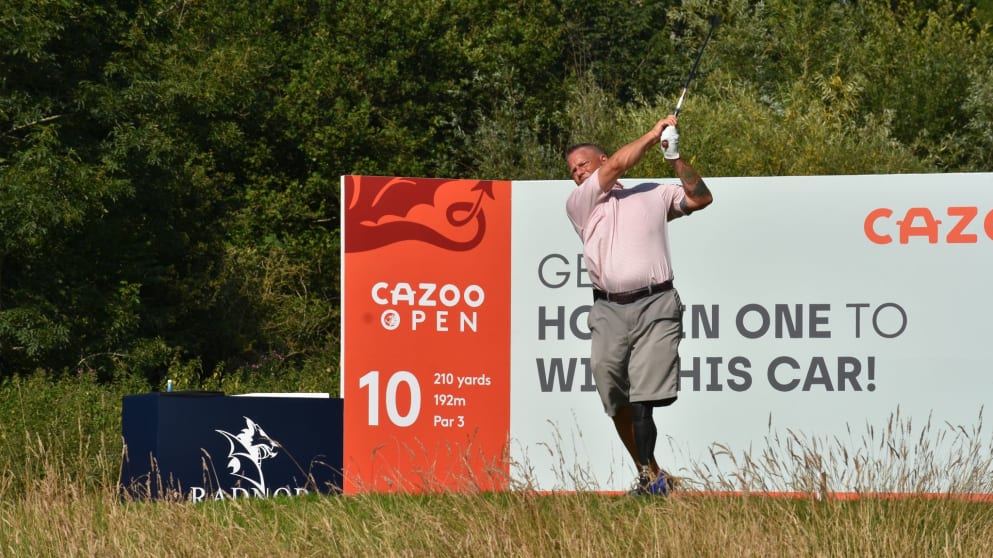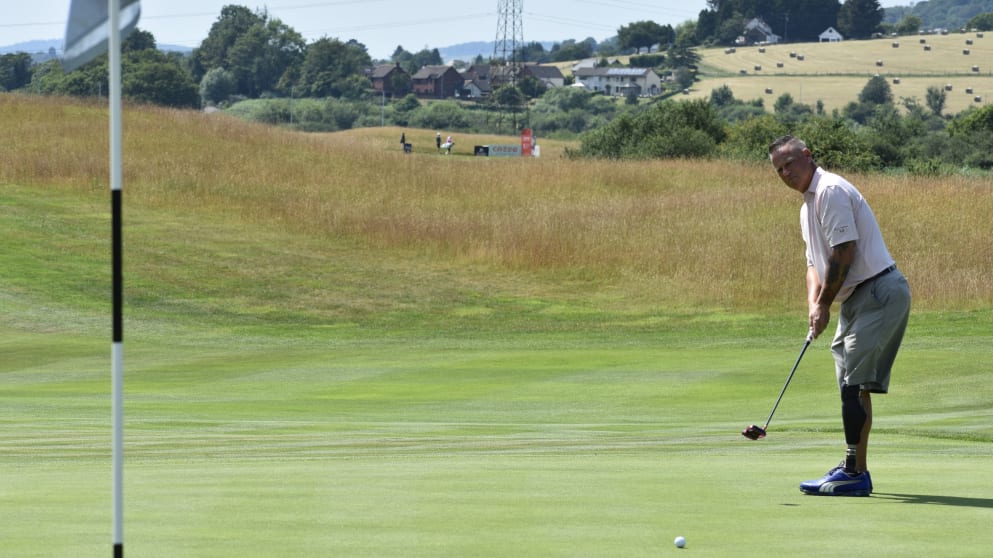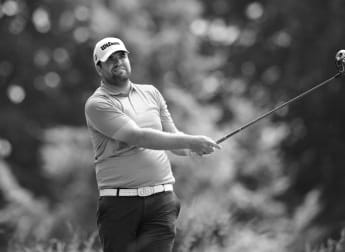_In this week’s player blog presented by enterprise, EDGA golfer Kenny Bontz talks about overcoming cancer and addiction, and the community of golf for the disabled _

From being a Type 1 diabetic to going through cancer, being an addict, deciding to amputate my leg, and now getting to where I am in golf and in life, I want to be able to help people with my story. I’ve now been involved in disability golf for 17 years, and on the 27th of August, it will be 17 years since I’ve taken a pain pill. I know what I’ve done to get where I’m at, and I will never go backwards. All I want to do now is affect other people’s lives in a good way.
It’s funny how things happen in life. When I was younger, I was always the athlete of my family, and would always have a ball in my hand. In high school my friends would go out to parties and I’d be the one in bed because I had a game or practice. But when I got out of high school, I went to college and was alone for the first time. I got into a lot of trouble, and I failed out, and that’s when I went to work with my dad in the printing industry. It’s a time I often think back to, because if those things had never happened, then I would never have been laid off and taken another job up North, and I would never have had an accident where a printing roll was let go off a clamp truck and crushed me into a wall. Because that kind of saved my life. It was after that I was diagnosed after two biopsies with Ewings sarcoma – a type of bone cancer. And with me also being a type 1 diabetic since I was 11, I went to Sloan Kettering with my family for two years, and battled cancer. It was horrible, and I was 188lb when I got sick and 119lb through my last chemo cycle, but I wasn’t in a good place when it happened, and the situation made me open my eyes.
I then had my first major operation. The first thing they did was take my tibia out and put a cadaver bone in its place. That was an 18-hour surgery, which comes a lot of rehab and pain, and with that pain comes pain pills. That bone in my leg should have lasted 15-20 years, and I was pretty much told to walk on eggshells by my surgeon to avoid breaking the bone, but I didn’t listen.
The first time it broke, I was coaching kids in soccer a couple of years later and I was clowning around with a couple of six-eight year old kids when one kicked my leg instead of the ball. I had to go back in to replace the bone, which was another 18-hour surgery, and this time they had to give me a total knee replacement – which is why I’m an above-the-knee amputee. It was successful, but again this fix was supposed to be a 15-20 year solution. In the next nine years, I had five more. And those surgeries didn’t just include my leg: Because they were replacing it with a hollow cadaver bone, they were also having to take bone chips and marrow from my hip to pack that bone.

Throughout all of those years and the ones that followed, the pain was immense, and I developed an addiction. I needed more and more pills to handle the pain. I remember the first time I took Vicodin - I took three pills a day, and at my worst I was taking 80, which is 64,000mg a day. I was also drinking, and taking Dilaudid. It cost me my marriage, my family – which thankfully I’ve gotten back – because when you’re an addict you hide it, and I lived in a dark place always doing things I shouldn’t be, sneaking off when no one can see. And then you’re getting sick everyday because your body is overwhelmed with it, and it became a vicious cycle. And I did it for six years.
But then I got to a point to a point in my life where the pills weren’t enough anymore. My next step would have been heroin, and when I got to that point, I knew if I went down that road I would have been dead in a month. So I called my surgeon, and I told him, I’ve got to take this leg off and get my life back, because I can’t keep taking these pills.
I did it to save my life, because a lot of people don’t beat where I was. But since I’ve done it, it’s changed my life for the good dramatically. I did some research on amputees before-hand but nothing like what I should have, but I was just in such a rush to save my life. It’s funny because at the time my dad wouldn’t talk to me because he was so upset and thought it was a failure, but now he says me it’s the best thing I ever did.

Golf has been something that has really changed my life for the good, too, but it had been a big part of my life for a long time. I played a little golf in high school, but once I had that first surgery I realised I really couldn’t risk running or playing contact sports because of the bone, so I decided to focus on golf. I really got into it, but when I first was playing through those grey years – as I call them – I was always playing high because rotating on my leg hurt so much.
After I took my leg off, I figured that I’d get a prosthetic and be back playing in a couple of weeks. But that was impossible, because my leg was so swollen after the operation as my body went through such a shrinking and swelling process that my first prosthetic was three times the size it is now.
The first time I played properly was probably a year after I got my prosthetic. I would chip and putt before that, but I remember going out for the first time and I shot a 95. I was so upset, and I was in pain, and then I played two days later and shot 97. I was someone who had never shot in the 90s before even when I played for the first time, so I called my prosthetist, went in to see him on a Monday and threw the leg at him. I was like to him, ‘fix this, because I need to shoot in the low 70s, not the 90s’. I didn’t want to hear it, but he said it’s going to take me a while to figure out.
So then I started to work with my caddie, and we spent a lot of time hitting shots. It took about two more years until I started to get really good, and I realise how much talent I must have had before during my grey area of life. That’s when I first started to play against able-bodied people, and even though I was working I was still competing and managing to place quite high.
4 players from the EDGA #CazooOpen
— 'Golfers First' (@edgagolf) July 22, 2021
No: 1, Kenny Bontz faced the pressure of cancer aged just 19, a pain leading to addiction to medication before choosing amputation & a very tough rehab. Today he's loving golf & eyeing the @ChampionsTour Find his story at https://t.co/m8GuS6R7Bh pic.twitter.com/pvMl969GAe
When I got involved with disability golf 17 years ago, which was amputee golf then, it was really just to see how people moved around on the golf course because I was having trouble walking. I remember Bob Buck from Eastern Regionals had called me up and said ‘we run these tournaments and you should come and play’, and I ended up winning! My dad had come with me and one thing he had been worried about was being around people who would have a drink afterwards or be taking pain medication, but I’m so strong willed I knew I was never going to go back to that place.
I played in these tournaments, and it became a great peer group. Everyone sits around and tells their stories and offers up advice. Back then I was the new guy asking questions on how to walk or how to treat things, and now I’m the one offering advice. I’m such a big advocate of paying it forward, and now as I’ve gained a bigger profile I’m the guy people come to, both at golf and through social media, and I love being able to do that. I played with a couple of different players this week, talking to them and having dinner, giving advice. And that’s not just amputee golfers, because disability golf has come so far with the level of inclusion, that I enjoy helping with any issues.
Golf has given me so much. What I went through, I wouldn’t wish on anybody, but it taught me a lot about who I am, and I know now that I’m a fighter. I’ve travelled around the world, I’ve played golf in different countries, I’ve won all over the world, and now I do talks, and go into cancer hospitals and see kids and show them how far they can come. I always tell people that when I used to play golf my friends would never know what they would get with me depending on how many pills I took and how that reacted to me body, and if I was going to shoot 65 and be happy or shoot 80 and break my clubs. Now I play I see the sun, hear the birds chirp, see people play and try and help people with their game. Playing with a clear head, it’s amazing how complete an individual it has made me. I used to call it six hours of Kenny time, and now it’s six hours of meeting new people, enjoying it and having fun, even in the rain when I joke about needing WD40. It’s about giving back now.
In this ‘must-see’ clip, we get to see why 8 @edgagolf players with disability will mix it with the European Tour stars at the #CazooOpen
— 'Golfers First' (@edgagolf) July 23, 2021
And thanks to the @EuropeanTour, our players can show other people how great golf can be for their health & social wellbeing ♥️😀🏌️@RandA pic.twitter.com/26njc3YoGZ
A few years ago I came to a point in my life where I had to decide what I wanted to, and now I’m really focused on seeing where I can get to in the game. I’d ended up getting divorced and I sold my company, and when I was considering my options I met someone who suggested I go move to Florida and play golf all year and they’d throw some money at me. I was 48 at the time, and the goal was to see if I worked hard if I could get to the Senior Tour. So I moved to Orlando, and met a coach, and we hit 2000 balls a day in 100 degree heat. He’d told me to get good at something you need to do it 10,000 times, so by the Monday I’d hit 10,000 shots and he said you’re hitting it really good. And I said well I should be, I hit the reps. He then said, ‘how many clubs do you have in your bag? I meant 10,000 with each club’. And I did it. I played my clubs for two and a half years and burnt out the sweet spot in every one of them. It was a lot of time, and a lot of effort, but it’s why I would win all of these tournaments because I was putting that time into it.
Now, my goal is the Senior Tour. I went to the Q School for the Champions Tour in 2019 and missed by five shots, and last year they didn’t have it, so I’m going to try again this year. I learnt so much about how much work I need to put in, because all of these guys used to play on the regular Tour, but I had so many people come up to me and tell me that I belonged there. Next year the U.S. Senior Open is at Sauchin Valley which I’ve played a lot, so I’m going to try and qualify for that. I’d love to get on the Tour for myself because it’s a great accomplishment, but it’s so much more than that for me. I want to help affect people’s lives for the good in any way I can and show people what they can achieve. In my life there’s a lot of people whose lives I affected in a bad way, but when I truly realised how wrong I was doing things in my life, I made changes. And that’s why I do talks now, because all you want to do is affect someone’s life in a good way.






